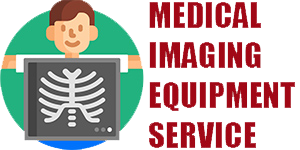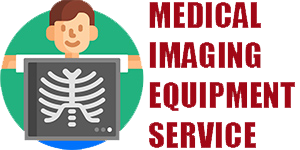

Annual Testing and Recertification of Isolated Power Systems and Line Isolation Monitors in accordance with NFPA 99
Isolated Power Systems and their accompanying Line Isolation Monitors are increasing in popularity. What began as a safety measure for flammable anesthetic agents has grown to become almost a necessity for wet procedure locations, operating rooms, and other critical areas of a healthcare environment.
If you have isolated power systems installed in your healthcare facility, by now you probably understand that these systems must be verified by a trusted vendor at least once per year. This is essential to maintain compliance with the National Fire Protection Association document NFPA 99, which is part of what is known as the Fire Code.
Our service representatives are ready to perform your annual testing of Isolated Power Systems and Line Isolation Monitors. We regularly schedule this service to be performed in the evenings, to place a minimum burden upon your schedule. NFPA 99 states that these isolated power systems and the accompanying line isolation monitors must be tested once every twelve months.
Here you will find the most frequently asked questions and answers concerning testing and recertification of isolated power systems and line isolation monitors. Contact us via the form below to schedule the annual inspection and recertification of your isolated power systems.
An isolated power system (IPS) is a system that provides electrical power to medical equipment in a healthcare facility in order to prevent the equipment from being connected to the facility's main power supply. The purpose of an IPS is to reduce the risk of electrical shock and electrocution to patients, healthcare workers, and equipment operators.
Line isolation monitor (LIM) testing is a critical component of ensuring the safety and reliability of an IPS. The National Fire Protection Association's NFPA 99: Health Care Facilities Code sets guidelines for the testing of IPS and LIM in healthcare facilities.
According to NFPA 99, an IPS and LIM system should be tested annually to ensure that they are functioning properly and providing the necessary level of isolation. This includes performing a continuity test to ensure that the IPS is properly connected to the medical equipment and a ground fault current test to ensure that the IPS is providing the necessary level of isolation.
The continuity test is performed by measuring the resistance between the IPS and the medical equipment. The resistance should be less than 1 ohm, indicating that the IPS is properly connected to the medical equipment.
The ground fault current test is performed by measuring the current flowing through the IPS. The current should be less than 1 milliampere (mA), indicating that the IPS is providing the necessary level of isolation.
In addition to these tests, the LIM should also be tested to ensure that it is functioning properly. The LIM is a device that continuously monitors the IPS and alerts healthcare workers if there is an interruption in the IPS or if the IPS is not providing the necessary level of isolation.
The LIM test is performed by simulating a ground fault on the IPS and verifying that the LIM correctly detects the fault and alerts healthcare workers.
It is also important to note that all testing should be performed by trained and certified personnel and that detailed records of all testing and any repairs or maintenance performed on the IPS and LIM should be kept for at least two years.
In addition to the annual testing, it is also important to perform regular preventive maintenance on the IPS and LIM. This includes cleaning and lubricating the system, as well as inspecting it for signs of wear or damage. Any issues found during preventive maintenance should be repaired immediately to ensure the continued safe and reliable operation of the IPS and LIM.
In summary, the isolated power system (IPS) is a system that provides electrical power to medical equipment in a healthcare facility in order to prevent the equipment from being connected to the facility's main power supply. The purpose of an IPS is to reduce the risk of electrical shock and electrocution to patients, healthcare workers, and equipment operators. Line isolation monitor (LIM) testing is a critical component of ensuring the safety and reliability of an IPS. The National Fire Protection Association's NFPA 99: Health Care Facilities Code sets guidelines for the testing of IPS and LIM in healthcare facilities, including annual testing and regular preventive maintenance. All testing should be performed by trained and certified personnel and that detailed records of all testing and any repairs or maintenance performed on the IPS and LIM should be kept for at least two years.

Isolated Power System Testing in accordance with NFPA99
Isolated Power Systems and their incorporated Line Isolation Monitors must be tested once per year, in accordance with NFPA99. We can perform your annual inspection and recertificvation, and provide you with the documentation needed to maintain compliance with NFPA99 and Joint Commission regulations.
Call us at (424) 204-2382 for a free estimate
Medical Imaging Equipment Service
Medical Imaging Equipment Service is a healthcare technology solutions company. Medical Imaging Equipment Service is involved in many areas of healthcare. Our primary business model is one of providing biomedical engineering services for healthcare providers and medical equipment manufacturers.
Healthcare Providers
For healthcare providers, Medical Imaging Equipment Service provides medical equipment maintenance services. Our services include medical equipment repair, calibration, preventative maintenance and electrical safety inspections. We develop custom medical equipment maintenance programs that maximize equipment readiness, while reducing the cost of equipment maintenance. We are certified to maintain all modalities of biomedical, medical imaging, and scientific laboratory equipment. Our equipment maintenance management program provides all documentation required to ensure compliance with the Environment of Care standards of the Joint Commission for the Accreditation of Healthcare Organizations, the College of American Pathologists, The Occupational Safety and Health Association, the American Hospital Association, the Food and Drug Administration – Safe Medical Devices Act, the National Fire Protection Association publications NFPA99 and NFPA104, as well as state governmental regulations.Medical Equipment Manufacturers
For medical equipment manufacturers, Medical Imaging Equipment Service offers an outsourced field service solution. The Medical Imaging Equipment Service Service Network is a conglomerate of Independent Service Organizations that work as a cohesive unit, providing field service operations for medical device manufacturers. Medical Imaging Equipment Service Network representatives perform medical equipment installation, repair, calibration, preventative maintenance and electrical safety inspections. We also provide in-service education and applications assistance for your end users. Our services have proven indispensable for emerging medical equipment manufacturers, and manufacturers located outside of the United States. In addition, we provide valuable feedback for manufacturers undergoing the Food and Drug Administration 510(k) evaluation process.Regulatory Compliance
We provide you with the documentation necessary to maintain compliance with the Joint Commission, NFPA99, and all other regulatory agencies.Service and Replacement
We can service your medical equipment currently in-use, or provide field service for medical device manufacturers.In-Service Education
We offer in-service education to your staff on the prinicpal and safety function of medical and medical imaging equipment.Online Service Reporting
We provide online service reports, including images and video whenever applicable.24-Hour Tech Support
Our support representatives are available 24 hours a day to answer any questions you may have.Design
We can help you design and implement a comprehensive medical equipment maintenance program in your healthcare facility.
Isolated Power System and Line Isolation Monitor testing in accordance with NFPA99
Below are some frequently asked questions and aswers concerning Isolated Power System and Line Isolation Monitor inspection requirements, in accordance with NFPA99.
Section 3.3.89 of NFPA99 defines an Isolated Power System Testing Services as A system comprising an isolation transformer or its equivalent, a line isolation monitor, and its ungrounded circuit conductors.
Section 3.3.9 of NFPA99 defines a Line Isolation Monitor as A test instrument designed to continually check the balanced and unbalanced impedance from each line of an isolated circuit to ground and equipped with a built-in test circuit to exercise the alarm without adding to the leakage current hazard. In an isolated power circuit, a ground fault would result in an alarm, but power would not be interrupted.
Section 6.3.2.2.8.1 of NFPA99 states Wet procedure locations shall be provided with special protection against electric shock.
Section 6.3.2.2.8.4 of NFPA99 states Operating rooms shall be considered to be a wet procedure location, unless a risk assessment conducted by the health care governing body determines otherwise.
This is the most controversial section. A risk assessment by the health care governing body can in fact deem an operating room not to be a wet procedure location. This would be contingent on interpretation of the mopping of the floor which occurs between cases as "drenching", as defined in Section 3.3.89 above.
Section 6.3.2.2.8.7 of NFPA99 states Operating rooms defined as wet procedure locations shall be protected by either isolated power or ground fault circuit interrupters.
Section 6.3.2.2.8.7 of NFPA99 states "Operating rooms defined as wet procedure locations shall be protected by either isolated power or ground fault circuit interrupters.
Section 6.3.2.2.9 of NFPA99 addresses Isolated Power
Section 6.3.2.2.9.2 of NFPA99 states The system shall be permitted to be installed where it conforms to the performance requirements specified in 6.3.2.6.
Section 6.3.2.6.3.2 of NFPA99 states The monitor shall be designed such that a green signal lamp, conspicuously visible in the area where the line isolation monitor is utilized, remains lighted when the system is adequately isolated from ground; and an adjacent red signal lamp and an audible warning signal (remote if desired) shall be energized when the total hazard current (consisting of possible resistive or capacitive leakage currents) from either isolated conductor to ground reaches a threshold value of 5.0 mA under normal line voltage conditions. The line isolation monitor shall not alarm for a fault hazard current of less than 3.7 mA.
This is interesting, as many of the Line Isolation Monitors still in use are older, often analog units that are set to alarm at only 2 mA. These units must be replaced immediately, as it is a violation of code to use them.
Section 6.3.3.3.2 of NFPA99 Line Isolation Monitor Tests states The line isolation monitor (LIM) circuit shall be tested after installation, and prior to being placed in service, by successively grounding each line of the energized distribution system through a resistor whose value is 200 x V (ohms), where V equals measured line voltage. The visual and alarms shall be activated.
Section 6.3.4.1.4 of NFPA99 states The LIM circuit shall be tested at intervals of not more than 1 month by actuating the LIM test switch. For a LIM circuit with automated self-test and self-calibration capabilities, this test shall be performed at intervals of not more than 12 months. Actuation of the test switch shall activate both visual and audible alarm indicators.
Section 6.3.4.2.1.1 of NFPA99 states A record shall be maintained of the tests required by this chapter and associated repairs or modification.
Section 6.3.4.2.1.2 of NFPA99 states "At a minimum, the record shall contain the date, the rooms or areas tested, and an indication of which items have met, or have failed to meet, the performance requirements of this chapter.
Section 6.3.4..2.2 of NFPA99 Isolated Power System Testing Services (Where Installed) states A permanent record shall be kept of the results of each of the tests.
- Reduced Shock Hazard
- Continuity of Power
- Line Noise Reduction, the transformer acts as an electrical filter.
- Advance warning system of what their equipment condition is.
- Reduced Fire Hazard
- Extra level of protection will keep down liability claims.
- We have been in the industry for over 40 years
- We provide complete documentation of your isolated power system leakage readings and alarm threhold limits
- We perform our inspection services in the evenings and/or on the weekends, so as not to disturb your surgery schedule
- Our service documentation will keep you in compliance with NFPA99 and Joint Commission accreditation requirements
- Amsco
- Auth
- Bender
- Crouse Hinds
- Edwards
- Electromagnetic Industries (EMI)
- Federal Pacific
- Federal Pioneer
- General Electric
- Hevi-Duty
- Hill-Rom
- Hospital Systems
- Isotrol
- Measurement Engineering Limited (MEL)
- Post Glover
- Russell & Stoll
- Square D
- Grainger
- Schneider
- Medical Equipment Repair and Maintenance
- Hospital Information Technology
- In-service Education and Service Training
Testimonials

"Medical Imaging Equipment Service has been maintaining our X-ray, CT, MRI and ultrasound equipment maintenance services for several years now. We a very satisfied with the level of technical competency and professionalism displayed by their technicians. We highly recommend Medical Imaging Equipment Service for all of your biomedical, medical laboratory, and medical imaging equipment maintenance needs."
- Patrick Martin M.D. PhD

"I am very satisfied with the services we receive from Medical Imaging Equipment Service of BiomedRx. Not only do they provide top-notch repair and maintenance support for our medical imaging equipment, they are also experts in the repair and calibration of biomedical and medical laboratory equipment."
- Rebecca Hernandez R.N.

"I like the way the service representatives from Medical Imaging Equipment Service perform in-service education and applications assistance to our clinical staff after every repair and preventative maintenance visit. This greatly improves our staff’s ability to perform user maintenance. It also seems to have reduced the incidence of unscheduled repair calls."
- Juan Griffin, Imaging Technologist

